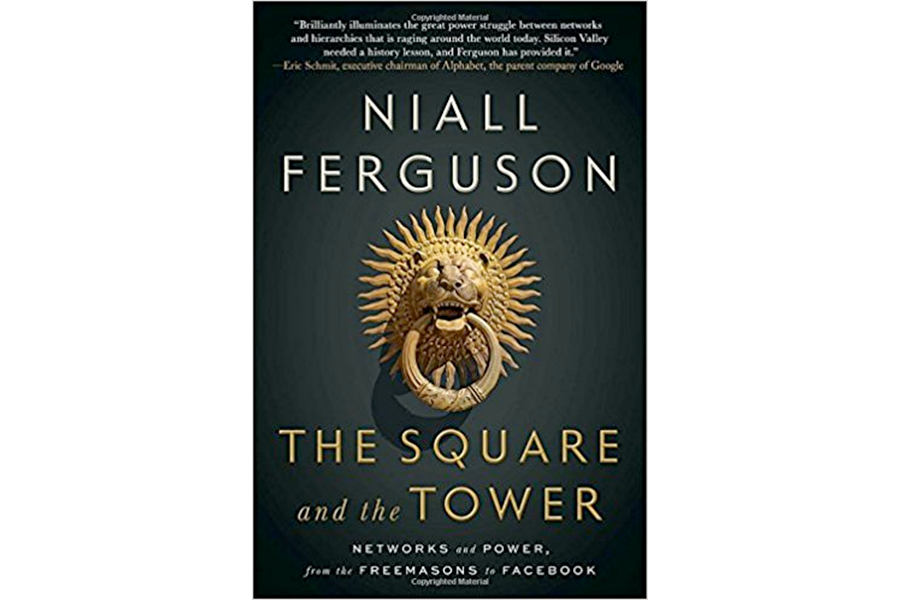'The Square and the Tower' considers the staggering power of networks
Loading...
Hierarchical structures – empires, kingdoms, companies – tend to dominate the study of history, for understandable reasons: they're concentrated, dramatic, and comparatively easy to research. They make coins, build roads and prisons, and keep boxes and boxes of receipts. As historian Niall Ferguson points out in his remarkably interesting new book The Square and the Tower, this concentrated visibility of hierarchies makes them much easier to research and analyze than the more scattered and diffused networks that are the other major shape power takes in human affairs.
Networks are usually far more piecemeal things, strong but strung out, often very deliberately secretive and thus cautious about leaving behind precisely the kinds of evidence historians need. Indeed, as Ferguson briefly mentions, just such a webbing of networks played a pivotal role in the beginning of American independence; not only were the fires of rebellion stoked by such Boston meeting-house networks as the Sons of Liberty, but, as David Hackett Fischer (not, as Ferguson has it, “David Hackett”) points out in his "Paul Revere's Ride," initial word of British aggression was spread over a large distance in a short amount of time by the oldest network of them all: word of mouth.
"The Square and the Tower" gains in fascination as it tells these kinds of stories, always surprising and always thought-provoking in the places and entities it chooses to pause and examine, everything from the Mafia to the Soviet Union of Stalin, about whom Ferguson writes, “No Oriental despot had wielded such complete personal power over an empire, because no previous hierarchy had been able to make participation in unofficial networks – even suspected participation – so terrifyingly dangerous.”
And since networks are merely tools, readers find them being used for every kind of purpose, from Stalinist purges to the cause of freedom. “The civil rights movement had its origins in black churches, black colleges and Souther chapters of the National Association for the Advancement of Colored People, which had been founded in 1909,” Ferguson writes. “It was precisely these deep institutional roots that made the movement so hard to stop: these were networks maintained and renewed each Sunday.”
Ferguson's book ranges with this kind of easy confidence over broad stretches of history, and although there's occasional overreaching (a theme like “networks are important and overlooked” lends itself very easily to seeing networks under every hedgerow), "The Square and the Tower" does an effective job of laying the groundwork for nothing less than a parallel accounting of power since the Enlightenment.
Ferguson understands that focusing so much on secret societies nudges him close to some fairly shady encampments; as he puts it, part of his purpose is “to rescue the history of networks from the clutches of the conspiracy theorists.” Since diffuse networks necessarily leave vague and sometimes contradictory footprints on the historical record, conspiracy theorists love to blame them for everything – the Hindenburg, Pearl Harbor, the JFK assassination, the 9-11 attacks, and so on. Ferguson knows this and works to short-circuit such nonsense by delving into the nitty-gritty details of network science. Fans of the Illuminati will hardly know where to point accusing fingers first.
Naturally, the book's theme of networked power transforms the later chapters into a javelin aimed squarely at the present day, not just such upheavals as the Arab Spring but also, centrally, the 2016 US presidential election, in which, as Ferguson points out, candidate Trump had a “significantly greater” presence on social media than candidate Clinton (on the eve of the election, the gap was tens of millions of followers wide). “There is a compelling case to be made,” Ferguson writes, that “without harnessing social networks through online platforms, Donald Trump could never have become president of the United States.”
Considering the absolutely staggering numbers involved – 350 million users on Twitter, hundreds of millions of tweets every day, 1.35 billion users on Facebook – and the ongoing revelations of foreign electronic interference in the US election (Ferguson unhesitatingly refers to cyber warfare), "The Square and the Tower," in addition to being provocative history, may prove to be a bellwether work of the Internet Age.






